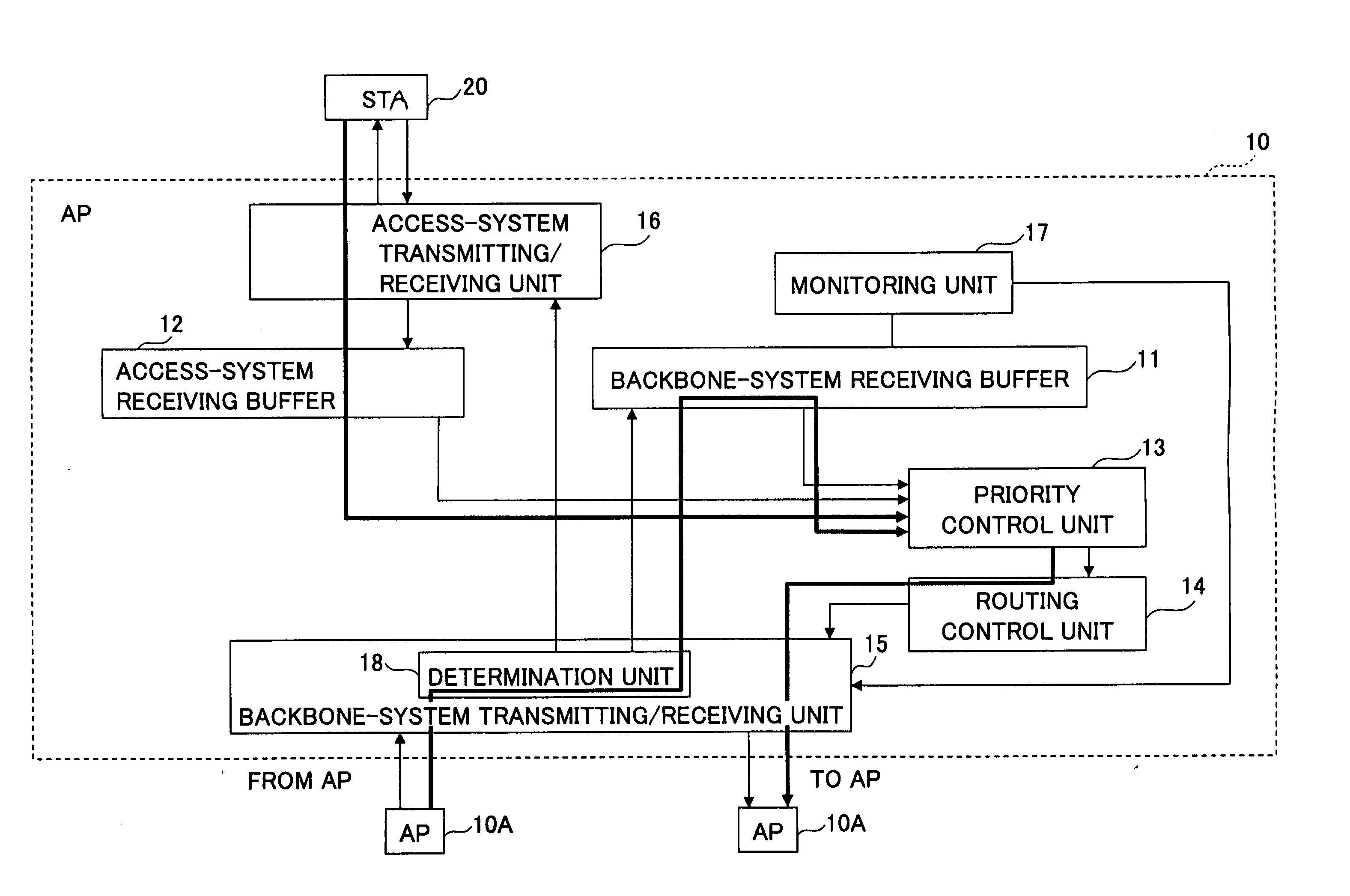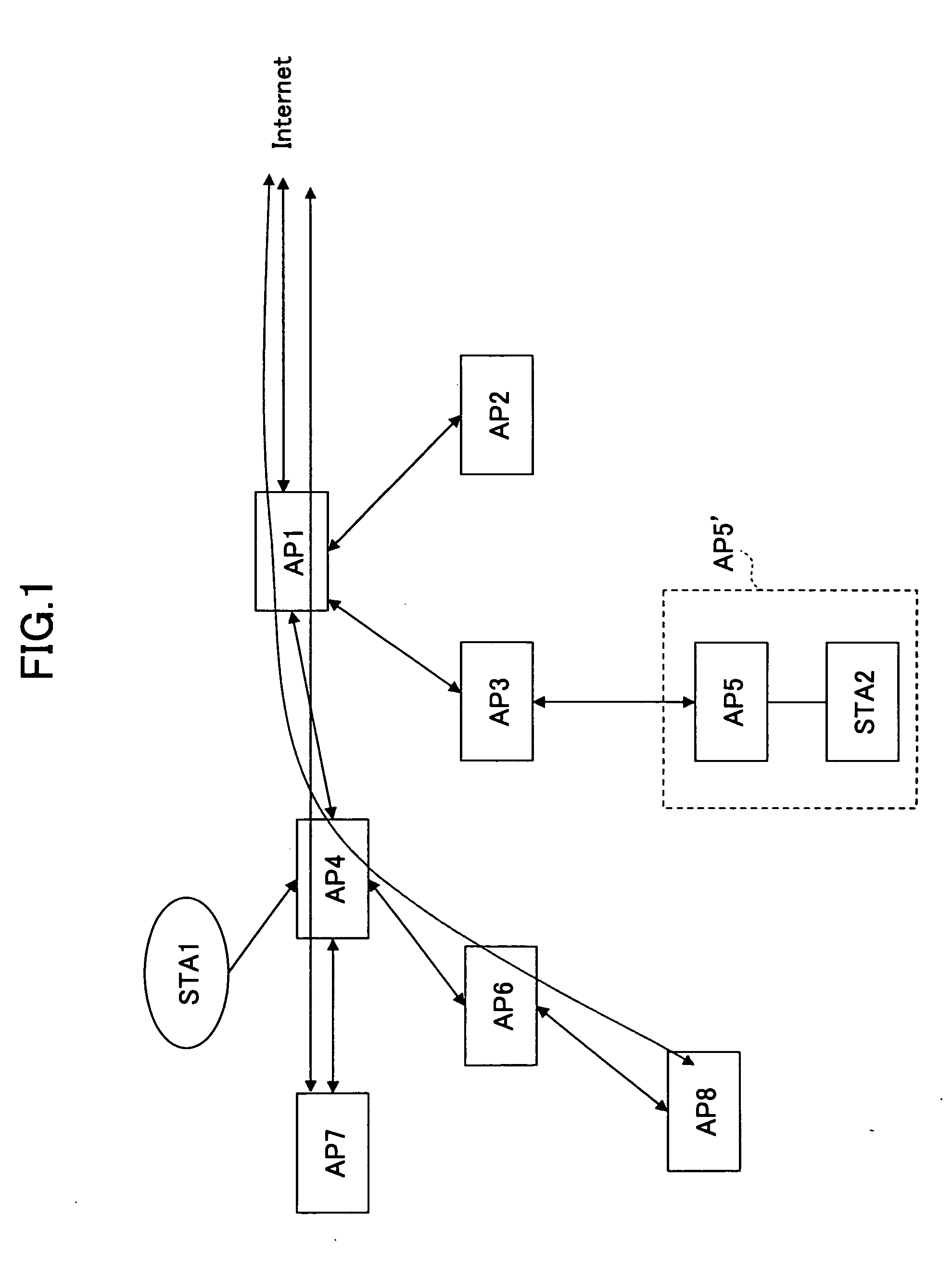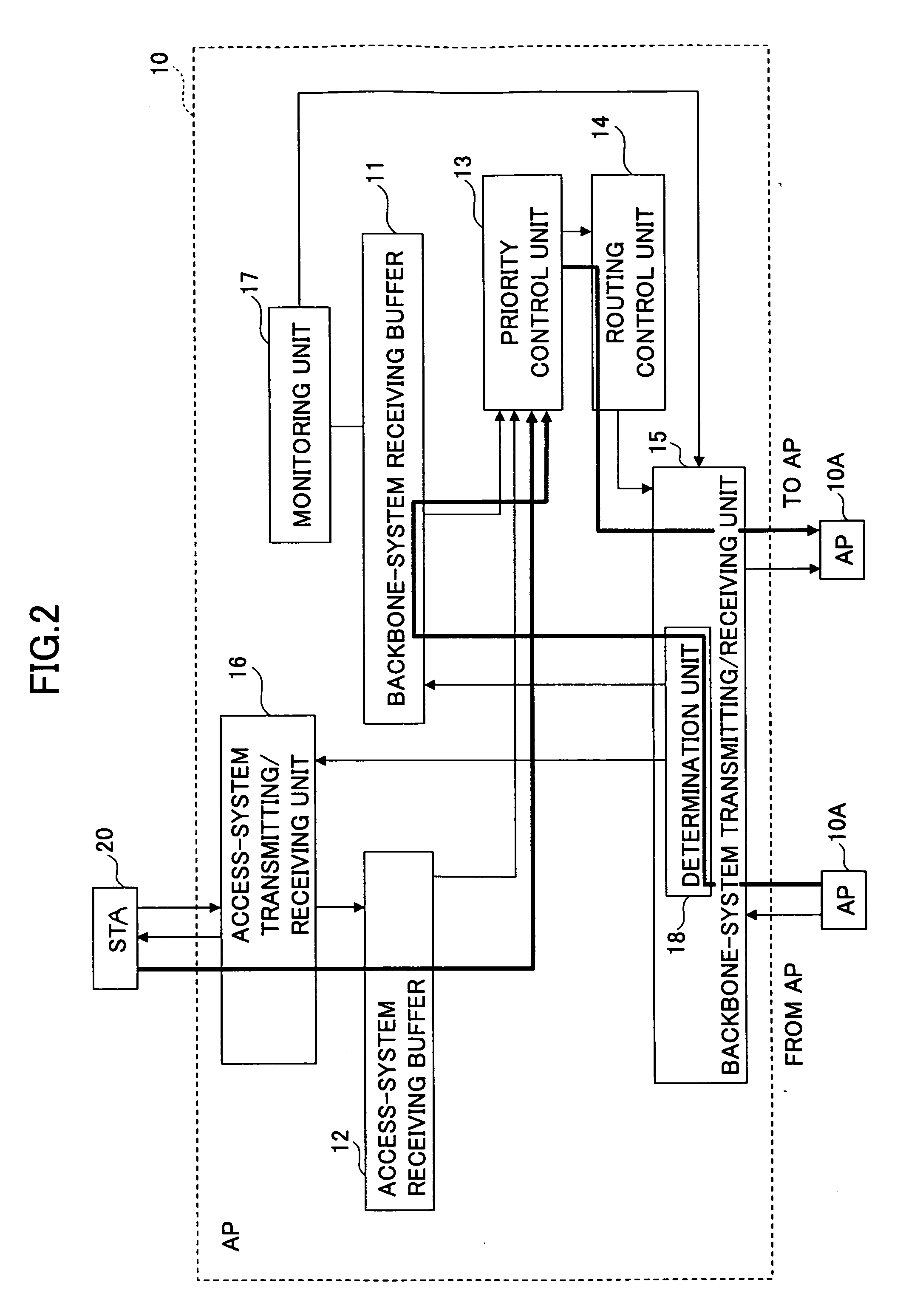Wireless communications apparatus, and routing control and packet transmission technique in wireless network
- Summary
- Abstract
- Description
- Claims
- Application Information
AI Technical Summary
Benefits of technology
Problems solved by technology
Method used
Image
Examples
Embodiment Construction
[0031] The present invention is described in detail below in conjunction with the attached drawings.
[0032]FIG. 1 is a schematic diagram illustrating an example of the network configuration of an ad-hoc network including multiple access points (wireless communications apparatus) AP1-AP8 that function as wireless base stations structuring a wireless backbone network. In addition, all or some of the access points AP1-AP8 function as wireless base stations controlling user terminals (STA) located under the associated access points. The access points AP1-AP8 are mutually connected via wireless links to form the wireless backbone network. A user terminal STA1 is located under the access point AP4, and another user terminal STA2 is connected to the access point AP5 via a cable in this example. The access point AP5 and the user terminal STA2 are integrated with each other to function as a single apparatus AP5′. Although not shown in FIG. 1, there may be some user terminals existing under e...
PUM
 Login to View More
Login to View More Abstract
Description
Claims
Application Information
 Login to View More
Login to View More - R&D
- Intellectual Property
- Life Sciences
- Materials
- Tech Scout
- Unparalleled Data Quality
- Higher Quality Content
- 60% Fewer Hallucinations
Browse by: Latest US Patents, China's latest patents, Technical Efficacy Thesaurus, Application Domain, Technology Topic, Popular Technical Reports.
© 2025 PatSnap. All rights reserved.Legal|Privacy policy|Modern Slavery Act Transparency Statement|Sitemap|About US| Contact US: help@patsnap.com



